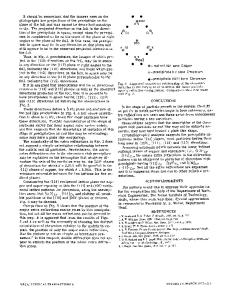Porosity formation in AI-9 Wt Pct Si-3 Wt Pct Cu alloy systems: Metallographic observations
- PDF / 8,585,787 Bytes
- 15 Pages / 597.28 x 777.28 pts Page_size
- 68 Downloads / 334 Views
I.
INTRODUCTION
POROSITY in aluminum alloy castings occurs because of the rejection of gas from the liquid metal during solidification and/or the inability of the latter to feed through the interdendritic regions to compensate for the volume shrinkage associated with the solidification, m Hydrogen is the only gas capable of dissolving to a significant extent in molten aluminum, m The dramatic decrease in its solubility at the solidification point of aluminum, resulting in outgassing, leads to the formation of porosity and reduced mechanical properties and corrosion resistance, t3,4,51 Besides hydrogen concentration, the formation of porosity is also controlled by other factors such as grain refining and inclusion content. Grain refiners are added in small amounts to molten aluminum alloys to control the grain structure in the casting. A1-Ti and AI-Ti-B master alloys are usually employed, where TiAls particles act as nucleation sites for the formation of primary a-aluminum dendrites and promote a uniform, equaxied grain structure. This leads to a finer dispersion of and, in some cases, a reduction in the amount of porosity,t6,7] Modification of aluminum alloy melts is normally carfled out to improve the mechanical properties. In A1-Si hypoeutectic alloys, it involves the addition of strontium or sodium to the melt in order to change the shape of the eutectic Si from acicular to fibrous, ts,9] The modified eutectic structure enhances the mechanical properties of the casting. However, this advantage is offset by the fact that
N. ROY, formerly Graduate Student, A.M. SAMUEL, Research Associate, and F.H. SAMUEL, Professor, are with the Department of Applied Sciences, University of Quebec at Chicoutimi, Chicoutimi, Canada G7H 2B1. Manuscript submitted March 17, 1995. METALLURGICAL AND MATERIALSTRANSACTIONS A
modified castings generally exhibit an increased amount of porosity when compared to unmodified ones,rio.-.12] where the increased porosity can adversely affect these properties.[ ~3,14]
The excellent foundry and mechanical properties of A1Si-Cu alloys make them popular candidates for automotive applications. Based on the AI-Si system, these alloys contain copper and magnesium as the main alloying elements and varying amounts of iron, manganese, zinc, and other impurity elements that partly go into solid solution and partly form intermetallics during solidification. In the context of automotive applications, involving production of substantial amounts of castings, the porosity problem attains particular significance, and it becomes important to understand the development of porosity in relation to the various alloy, processing, and solidification parameters involved during the casting process. As part of an ongoing research program on the study of porosity in important automotive alloys, porosity formation in A1-9 wt pct Si-3 wt pet Cu base alloys was studied, varying the additives (to cover the wide range of alloy compositions used in such applications), the hydrogen level, and the thermal parameters in order to
Data Loading...











